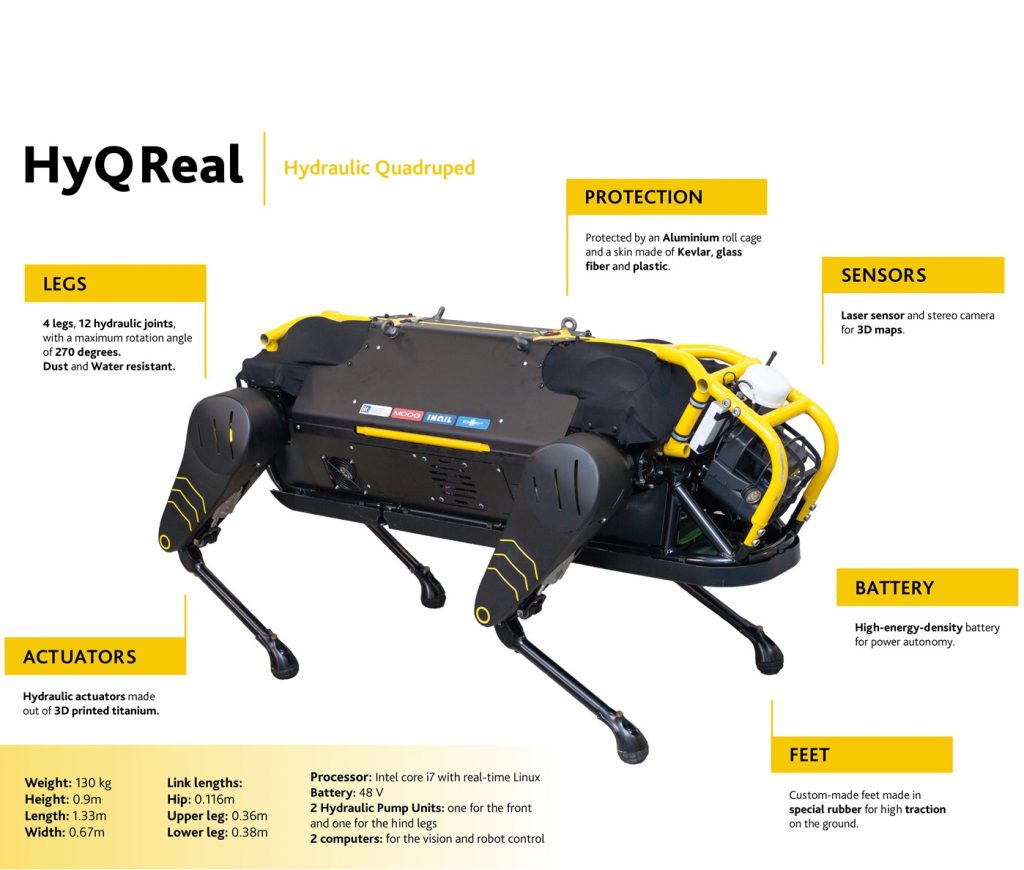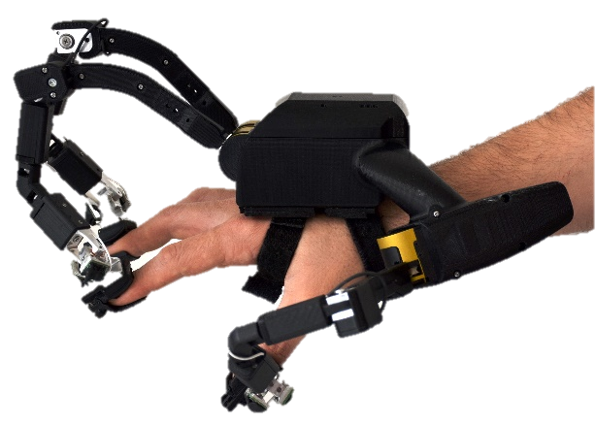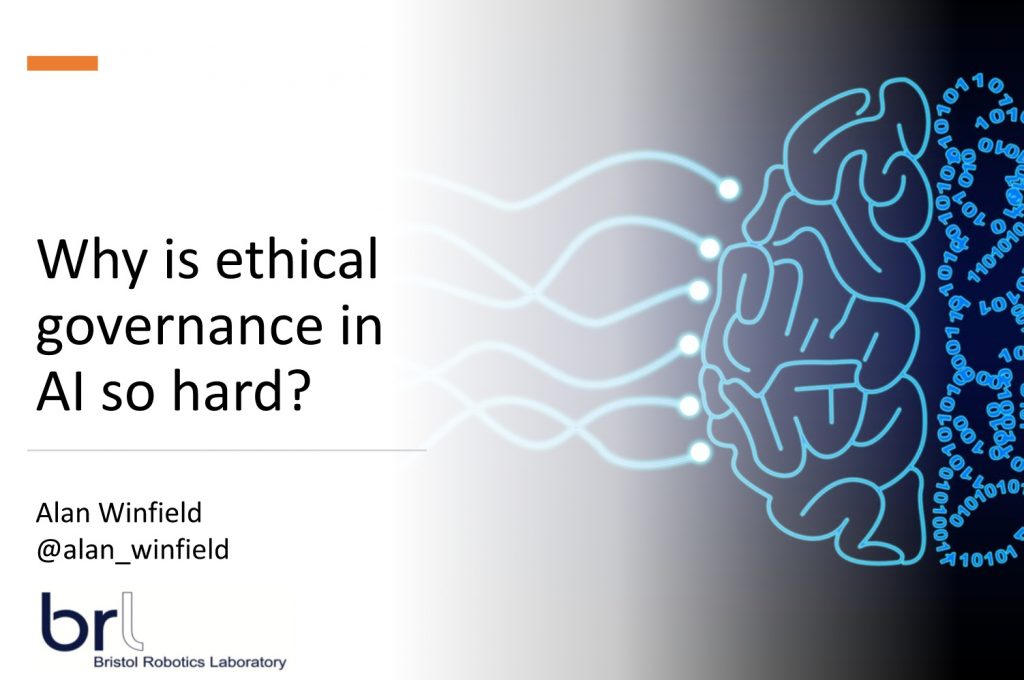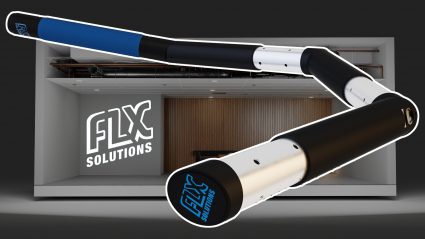Similarity of legs, wheels, tracks suggests target for energy-efficient robots
MCRI – A Case for Robotic Tape Inspection
Smart Floating Arms
Studies show promise using drones to elicit emotional responses
Researchers develop prototype of robotic device to pick, trim button mushrooms
The new IIT’s “Robot Teleoperativo” (teleoperation robot)
The Robot Teleoperativo is a new robotics result achieved at IIT-Istituto Italiano di Tecnologia and combining the rugged locomotion of HyQReal robot with dexterous and powerful manipulation assured by a new robotic arm, controlled by immersive VR visualization and haptic teleoperation. It represents a significant contribution to the state-of-the-art robotics dedicated to intervention on unstructured, difficult terrain environments, requiring powerful capabilities. The human operator can always be in control, not being replaced by the robot but substituted and assisted by it, in the case of situations where humans may be exposed to risks for their health, such as disaster response or emergency in nuclear, marine, chemical, oil-&-gas, environments.
In a new video, researchers show the achieved results: the Robot Teleoperativo is able to open doors, access fire equipment, gather precious items, navigate in the dark, and walk over difficult terrain. The video was showed during the international conference ICRA 2021, on May 31st.
With the effective execution of such tasks, albeit in simulated lab setup scenarios, the three years of developmental research in the Robot Teleoperativo project has shown that although the challenge of substituting human workers is a difficult one, it is certainly not an insurmountable one.
The project is a result of the close collaboration between IIT-Istituto Italiano di Tecnologia and INAIL (Italian National Worker’s Compensation Authority). The 3-year project started in 2017 with an aim to enhance occupational safety and health (OSH) in demanding and dangerous occupations. The goal was to keep the worker who is engaged in high-risk interventions in demanding environments, at the core of the development; researchers worked with firefighters to define specific needs and they will further explore the use of Robot Teleoperativo in realistic scenario.
Robot Teleoperativo consists of two modules, the field robot and the pilot station. The field robot integrates the versatile locomotion of the HyQReal hydraulic quadruped robot with the dexterity and power of the INAIL-IIT multi-degrees-of-freedom (DOFs) robotic arm. At the pilot station, the 6-DOF haptic teleoperation device REMOTArm, including the 3-finger HEXOTrAc-Plus hand exoskeleton, combines with the 3D virtual reality (VR) based intuitive, information-rich interface for perception, interaction, and teleoperation. The field-pilot combination offers an immersive telepresence experience to the operator (worker), allowing them to project their actions to and perceive the information from the remote environment through the field robot.

The HyQReal quadruped, with its 90 cm height, 133 cm length, and 130 kilograms of weight, demonstrated in 2019 being able to develop sufficient force to tow a passenger plane of over three tons. With its advanced locomotion, the HyQReal is capable of navigating difficult terrain, characterized by slopes, stairs, or debris, with a degree of mobility far greater than in the case of wheeled or tracked vehicles. The HyQReal is equipped with a variety of cameras and multimodal sensors for real-time environment perception.
INAIL-IIT arm is a robotic manipulator with strength and dexterity. The 5-DOF serial robotic arm provides the ability to interact with, and manipulate the environment with robustness, precision, and power. It is about 1.0m in length, and has a 4 kg payload capacity. Its 5 joints integrate compact and lightweight, torque controlled actuators, which allow the manipulator arm to operate in position and / or torque-control depending on the task. The HERI II robotic hand, with its multi-finger configuration, combines strength and dexterity for grasping heavy as well as delicate objects.

REMOTArm is the haptic teleoperation pilot interface for precise tele-manipulation. The REMOTArm is a desk-mounted, 6-DOF, haptic teleoperation device. It tracks the position and orientation of the operator’s wrist with high accuracy, and offers a much larger workspace than similar commercial devices. It provides 3-DOF force feedback at the wrist (> 20N). The 3-finger HEXOTrAc-Plus hand exoskeleton is an ergonomic haptic glove that accurately tracks the operator’s gestures when tele-manipulating the field manipulator. Its actuators can display the remotely sensed interaction forces (< 10 N) to the user at the robotic hand as they happen. The interface is lightweight, easy-to-wear, and includes gravity compensation for user comfort.
The operator uses a VR system for an immersive 3D perception of the remote environment. The user interface, using commercial head-mount display devices and VR software, makes for an intuitive and effective real-time projection of the field of action for the remote operator. Using the multimodal vision, depth, and ambient sensing system on-board the field robot, the interface “reconstructs” the remote field context for the operator, providing an information-rich interface for perception, interaction, and control.
This successful outcome has encouraged researchers to push the boundaries of technological innovation further. IIT and INAIL continue their close collaboration in this field aiming at expanding the possibilities in remote telerobotics research and its transition from the lab to the real hazardous work environments.
Further information
The research study was coordinated by Nikhil Deshpande, Researcher at IIT’s Advanced Robotics Line, and involved the research groups led by Claudio Semini (for HyQReal), Nikolaos Tsagarakis (for manipulation) and Ioannis Sarakoglou (for teleoperation) at IIT in Genova (Italy).
Website: https://advr.iit.it/projects/inail-scc/teleoperazione
Bird-like robots could assist in medical emergencies and hunt down drones
5 Ways Robotics-as-a-Service Benefits Your Automation Goals
Underwater robot does not need help on the ocean floor
Ethics is the new Quality

I took part in the first panel at the BSI conference The Digital World: Artificial Intelligence. The subject of the panel was AI Governance and Ethics. My co-panelist was Emma Carmel, and we were expertly chaired by Katherine Holden.
Emma and I each gave short opening presentations prior to the Q&A. The title of my talk was Why is Ethical Governance in AI so hard? Something I’ve thought about alot in recent months.
Here are the slides exploring that question.
And here are my words.
Early in 2018 I wrote a short blog post with the title Ethical Governance: what is it and who’s doing it? Good ethical governance is important because in order for people to have confidence in their AI they need to know that it has been developed responsibly. I concluded my piece by asking for examples of good ethical governance. I had several replies, but none were nominating AI companies.
So. why is it that 3 years on we see some of the largest AI companies on the planet shooting themselves in the foot, ethically speaking? I’m not at all sure I can offer an answer but, in the next few minutes, I would like to explore the question: why is ethical governance in AI so hard?
But from a new perspective.
Slide 2
In the early 1970s I spent a few months labouring in a machine shop. The shop was chaotic and disorganised. It stank of machine oil and cigarette smoke, and the air was heavy with the coolant spray used to keep the lathe bits cool. It was dirty and dangerous, with piles of metal swarf cluttering the walkways. There seemed to be a minor injury every day.
Skip forward 40 years and machine shops look very different.
Slide 3
So what happened? Those of you old enough will recall that while British design was world class – think of the British Leyland Mini, or the Jaguar XJ6 – our manufacturing fell far short. “By the mid 1970s British cars were shunned in Europe because of bad workmanship, unreliability, poor delivery dates and difficulties with spares. Japanese car manufacturers had been selling cars here since the mid 60s but it was in the 1970s that they began to make real headway. Japanese cars lacked the style and heritage of the average British car. What they did have was superb build quality and reliability”*.
What happened was Total Quality Management. The order and cleanliness of modern machine shops like this one is a strong reflection of TQM practices.
Slide 4
In the late 1970s manufacturing companies in the UK learned – many the hard way – that ‘quality’ is not something that can be introduced by appointing a quality inspector. Quality is not something that can be hired in.
This word cloud reflects the influence from Japan. The words Japan, Japanese and Kaizen – which roughly translates as continuous improvement – appear here. In TQM everyone shares the responsibility for quality. People at all levels of an organization participate in kaizen, from the CEO to assembly line workers and janitorial staff. Importantly suggestions from anyone, no matter who, are valued and taken equally seriously.
Slide 5
In 2018 my colleague Marina Jirotka and I published a paper on ethical governance in robotics and AI. In that paper we proposed 5 pillars of good ethical governance. The top four are:
- have an ethical code of conduct,
- train everyone on ethics and responsible innovation,
- practice responsible innovation, and
- publish transparency reports.
The 5th pillar underpins these four and is perhaps the hardest: really believe in ethics.
Now a couple of months ago I looked again at these 5 pillars and realised that they parallel good practice in Total Quality Management: something I became very familiar with when I founded and ran a company in the mid 1980s.
Slide 6
So, if we replace ethics with quality management, we see a set of key processes which exactly parallel our 5 pillars of good ethical governance, including the underpinning pillar: believe in total quality management.
I believe that good ethical governance needs the kind of corporate paradigm shift that was forced on UK manufacturing industry in the 1970s.
Slide 7
In a nutshell I think ethics is the new quality
Yes, setting up an ethics board or appointing an AI ethics officer can help, but on their own these are not enough. Like Quality, everyone needs to understand and contribute to ethics. Those contributions should be encouraged, valued and acted upon. Nobody should be fired for calling out unethical practices.
Until corporate AI understands this we will, I think, struggle to find companies that practice good ethical governance.
Quality cannot be ‘inspected in’, and nor can ethics.
Thank you.
Notes.
[1] I’m quoting here from the excellent history of British Leyland by Ian Nicholls.
[2] My company did a huge amount of work for Motorola and – as a subcontractor – we became certified software suppliers within their six sigma quality management programme.
[3] It was competitive pressure that forced manufacturing companies in the 1970s to up their game by embracing TQM. Depressingly the biggest AI companies face no such competitive pressures, which is why regulation is both necessary and inevitable.
A helping hand for working robots
Seafood Processors Turning to Robotics And Automation
Researchers create robot that smiles back
#333: Snake-like Robot as a Worker Companion, with Matt Bilsky

Matt Bilsky, founder and CEO of FLX Solutions, discusses the snake-like robot he invented called the FLX BOT. The FLX BOT consists of modular links, each with a joint that can extend and rotate to get into tight spaces. Each link includes sensors including inertial measurement units and a camera. The robot is used to navigate and work in challenging environments, such as above ceilings and within walls. Matt discusses the key innovations of his product as well as his academic and entrepreneurial journey that led him to the FLX BOT.
Matt Bilksy

Matt Bilsky, PhD, PE is the inventor of the FLX BOT, a licensed Professional Engineer, a Mechanical Engineering professor at Lehigh University, and a former repair/maintenance contractor. In 2017, he was awarded with the Lehigh University Entrepreneurship Educator of the Year. Matt has a Mechanical Engineering Ph.D. from Lehigh University focused on smart product design, Technical Entrepreneurship, and mechatronics. He holds two additional Lehigh degrees: a BS in Mechanical Engineering with an Electrical Engineering minor and a Master of Engineering degree also in Mechanical Engineering. Since he was a child Matt has been an innovator. In his basement shop he designed and built numerous electronic gadgets. In 2003 he started his first company, Mattcomp Services LLC, offering computer repair, networking, home theater, and handyman services. He also created a web hosting company in 2005, Mattcomp Hosting, including all necessary back-end components on dedicated servers.
Links